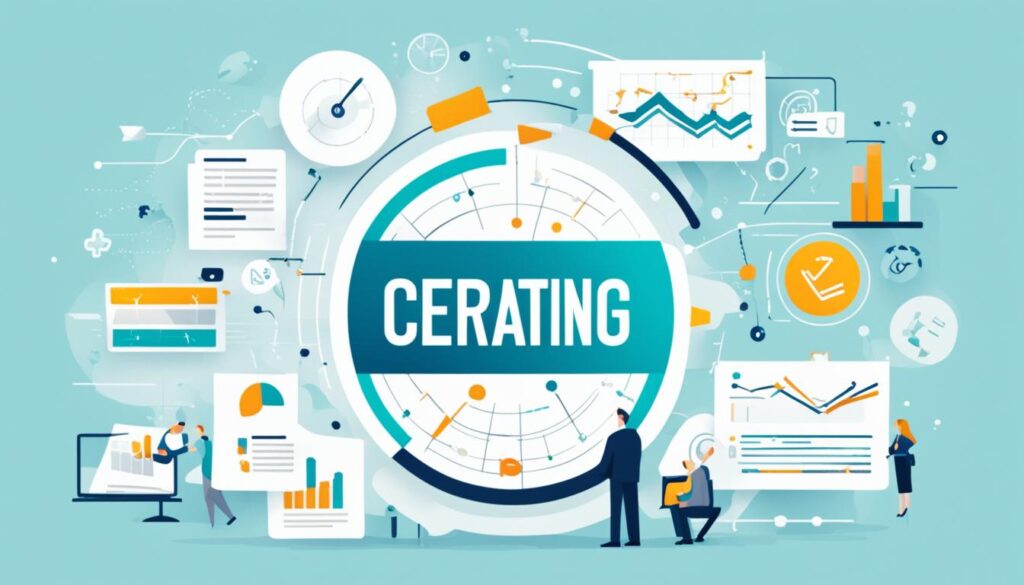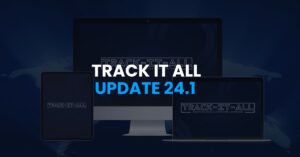In today’s world, Reporting and Analytics Features are key. They give clear insights into an organisation’s strategy. This helps in making data-driven decisions and improving performance.
For companies like “Track It All”, measuring their training strategy’s success is vital. These tools offer real-time data. This helps understand how engaged people are and how well the workplace is doing. By matching with business goals, these features support ongoing improvement.
In eLearning, these features are also crucial. They show how well learning systems work by tracking user engagement and progress. With cost-effective analytics, they prove the value of investing in learning tools. For “Track It All”, these features are key to smart management.
Key Takeaways
- Reporting and Analytics Features provide strategic data insights for businesses.
- Real-time reporting helps measure and optimise training strategies.
- Analytics foster engagement and workplace performance improvement.
- Validation of eLearning investments through detailed user data.
- Integration with business objectives enhances data-driven decision-making.
Key Components of Advanced Reporting and Analytics Tools
Advanced reporting and analytics tools are key to transforming how we make decisions. They help teams find important insights in large data sets. This improves decision-making and how well teams perform. Let’s look at what makes these tools special.
Data Integration
Data integration is crucial for bringing together different data sources in an organisation. It gives a full view of how things work. By doing this, businesses can combine various data into one place for better analysis.
This is the first step in advanced analytics, from finding performance metrics to tracking important activities. Tools like “Track It All” use strong data integration to make sure reports are accurate and up-to-date.
Data Visualisation Tools
Data visualisation tools turn complex data into easy-to-understand visuals. For example, Grow lets users make detailed charts and dashboards. These tools make dashboard reporting easier, helping stakeholders quickly understand important info for making decisions.
Interactive Dashboards
Interactive dashboards let users interact with data in real-time. They can customize and filter data as needed. This is key for tracking performance and making custom reports that meet business needs.

Data Exploration
Data exploration encourages a culture of curiosity and learning. It lets businesses find new trends and patterns. This is vital for advanced analytics, helping to understand what affects key metrics like cycle time and yield.
Collaboration Features
Collaboration tools in reporting tools help with collaborative decision-making. They let different team members share and discuss reports in real-time. This way, everyone’s ideas help make better decisions, improving business performance.
These parts together create a strong framework for advanced analytics. They help organisations like “Track It All” make better decisions with data. Tools like Speridian Technologies’ CaseXellence platform let users see important metrics, spot trends, and create custom reports for better insights.
Key Benefits of Reporting and Analytics Features
Advanced reporting and analytics tools bring big benefits to a company like “Track It All”. They help with enhanced decision-making by giving managers solid data. This lets them lead their teams better. The tools also make planning, budgeting, and forecasting more accurate by providing timely, relevant info.
Real-time reporting is a big plus. It gives instant updates on how things are going. This boosts operational efficiency and makes customer service quality better at “Track It All”. For example, automated reports can send out daily, weekly, or monthly to keep everyone informed.
Using embedded analytics and reporting tools helps companies stay flexible. They can quickly adapt to changes in the market and meet customer needs. These tools help managers make smart choices and find new areas to grow and improve.
Analytics solutions like Track It All also focus on improving agent performance. They help spot training needs and make better use of resources. This leads to being more cost-effective. Regularly checking and improving reporting helps “Track It All” find new info and plan for the future.

These systems also give deep insights that make employees happier and more engaged. For example, tracking things like employee turnover and engagement scores helps manage the workforce better. This boosts productivity and cuts costs, making sure efforts match business goals for success over time.
| Benefit | Impact on Business |
|---|---|
| Enhanced Decision-Making | Guides employees in the right direction, improves planning and forecasting |
| Real-Time Reporting | Boosts operational efficiency and customer service quality |
| Operational Efficiency | Enhances flexibility and productivity |
| Customer Service Quality | Leads to improved client satisfaction |
| Agent Performance | Identifies training opportunities and improves resource allocation |
| Cost-Effectiveness | Drives efficient use of resources and supports financial planning |
Conclusion
Advanced Reporting and Analytics are key for today’s businesses, like Track It All. They help us use data better, make smarter decisions, and work more efficiently. This leads to saving costs and doing more with less.
As markets and customer needs change, staying ahead is vital. Tools like diagnostic and descriptive analytics are essential. They help us understand past events and predict future ones.
Using tools like Tableau and Power BI for visualising data, and SAS for mining it, is crucial. Practices such as cohort analysis and Monte Carlo simulations give us deeper insights and help manage risks.
The data analytics field is set to create many new jobs. The Bureau of Labor Statistics predicts 59,400 new jobs by 2032, growing at 35%. Companies like Track It All must keep investing in these areas to lead the industry. By using these tools, we can grow sustainably and succeed in a fast-changing market.








